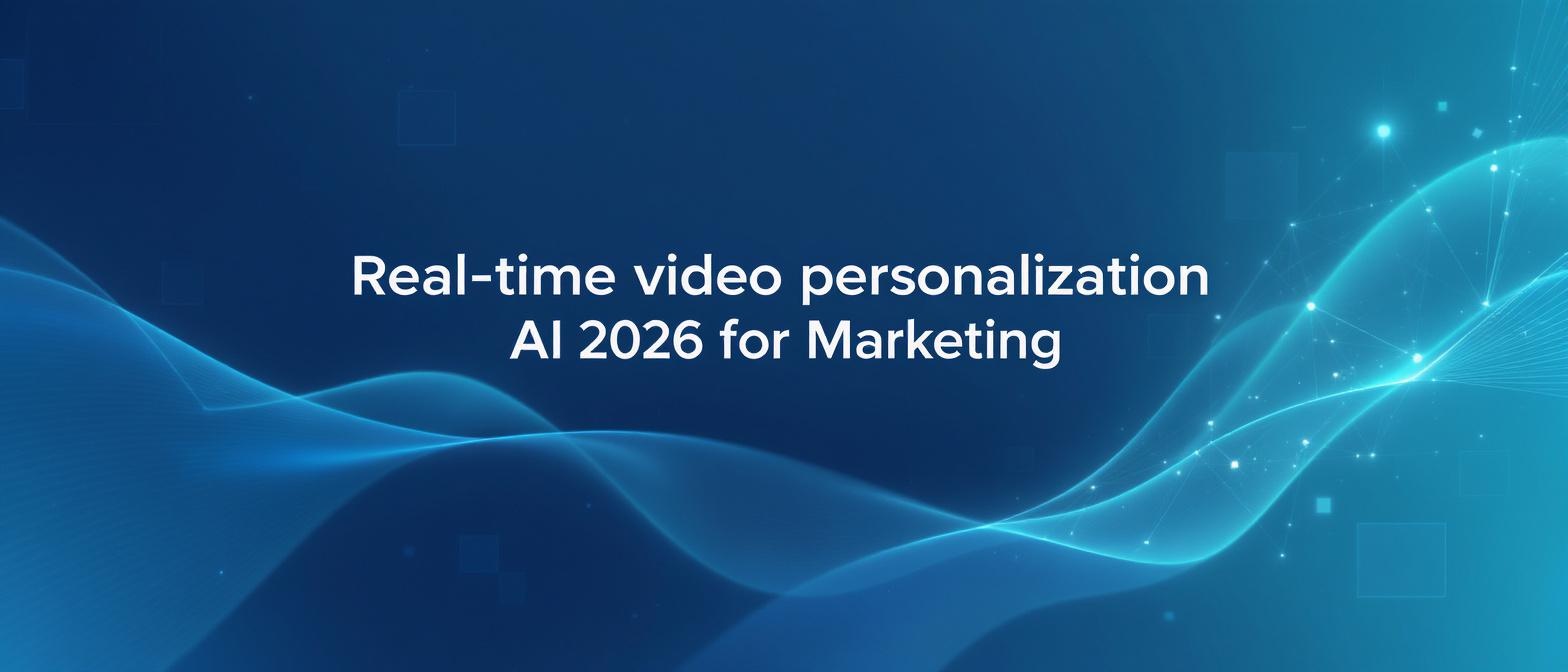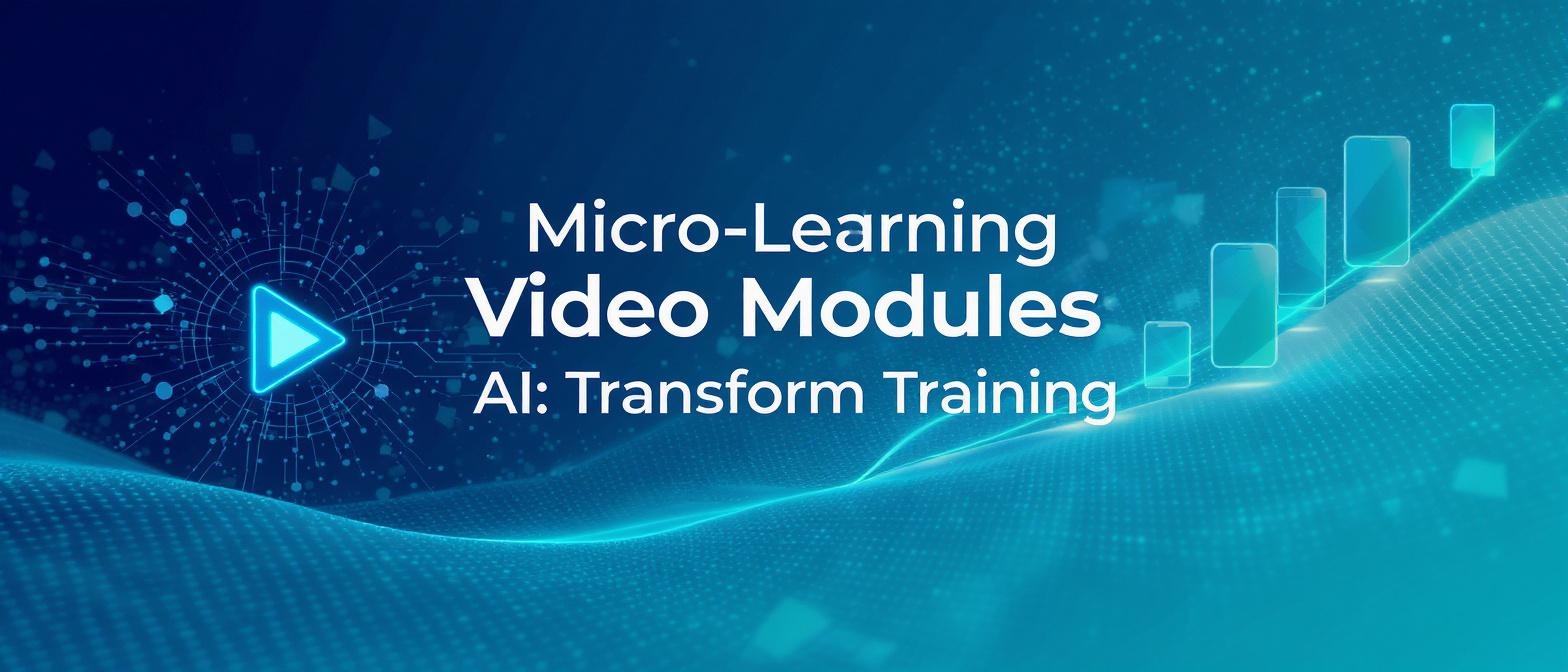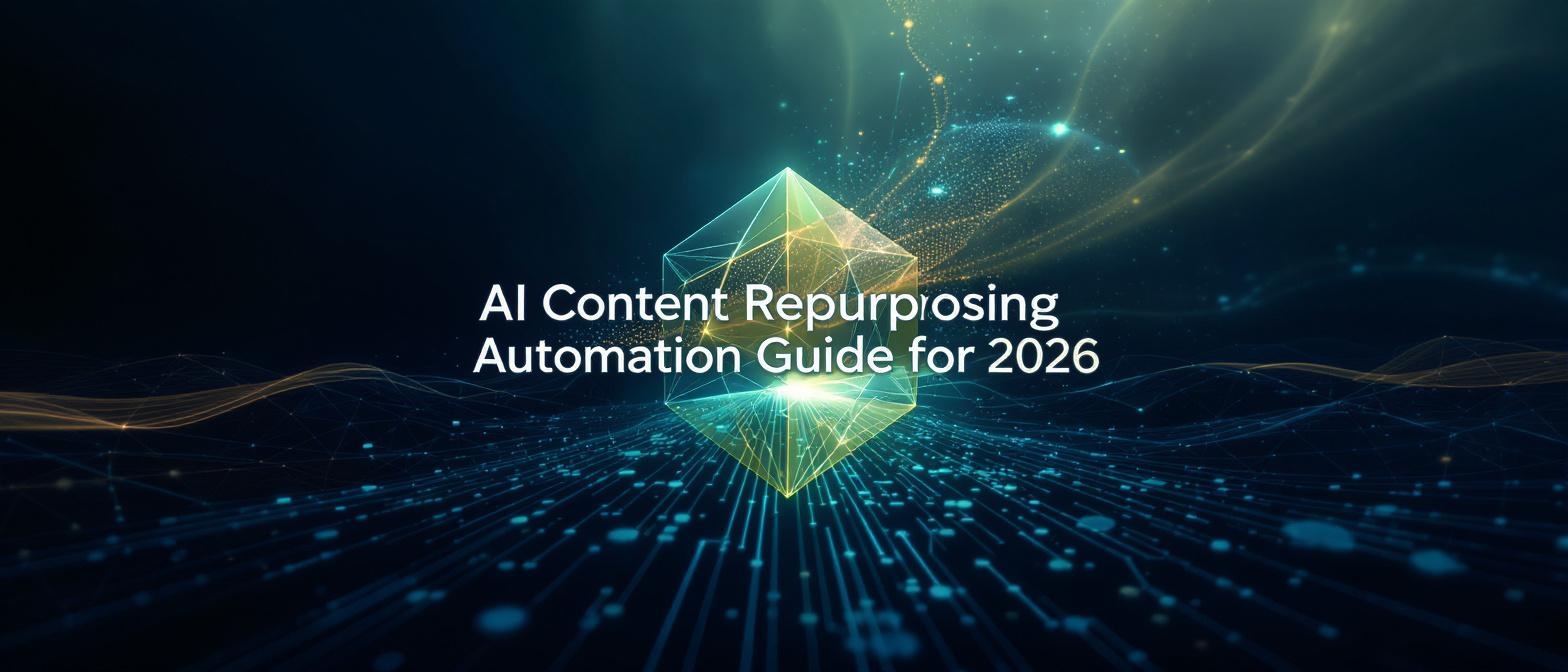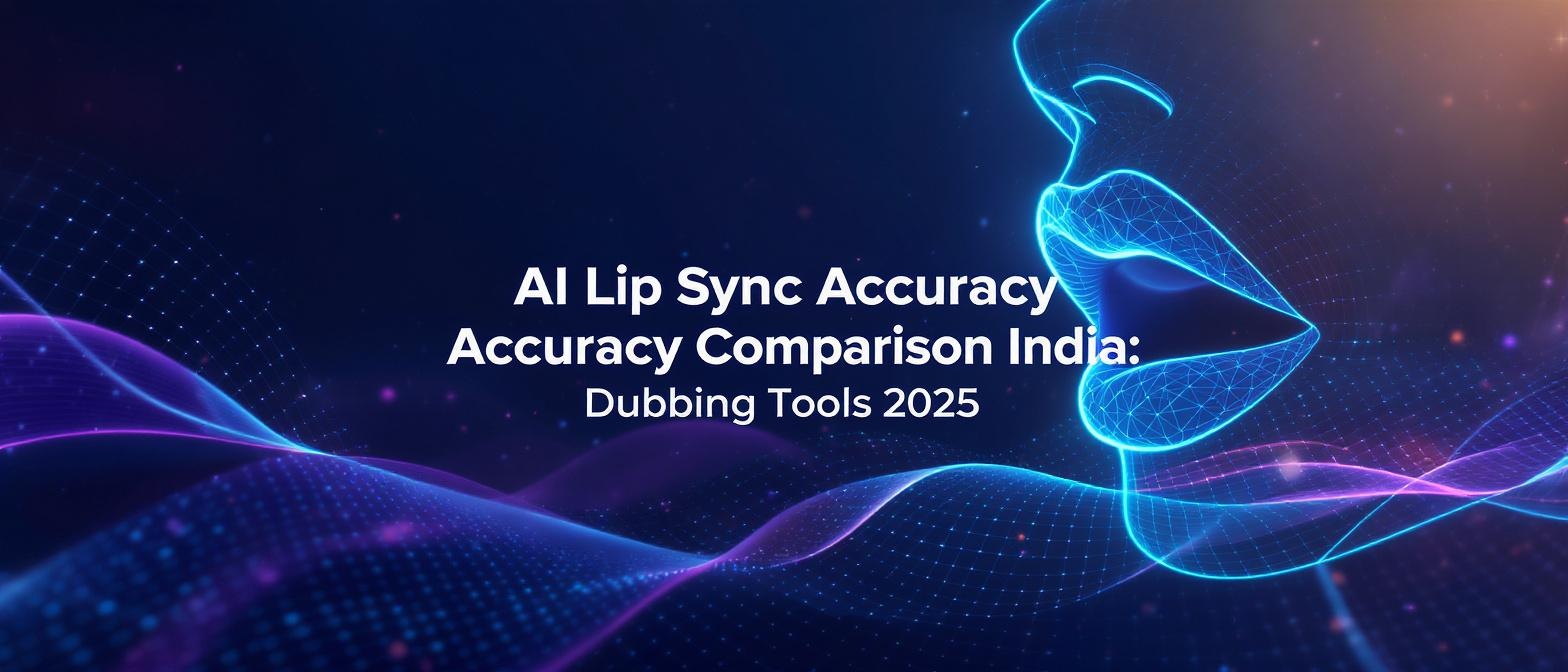How Real-Time Video Personalization AI 2026 Transforms Enterprise Marketing
Estimated reading time: ~12 minutes
Key Takeaways
- Real-time video personalization AI creates unique videos for each viewer, driving deeper engagement.
- A powerful AI tech stack delivers dynamic content in milliseconds for hyper-personalization.
- Platforms like Studio by TrueFan AI offer user-friendly, scalable solutions.
- Implementing on-the-fly video personalization boosts conversions, loyalty, and brand impact.
In the hyper-competitive digital arena of 2025, enterprises are locked in a fierce battle for consumer attention. Generic, one-size-fits-all marketing no longer cuts through the noise. The critical differentiator is, and increasingly will be, personalization at a scale previously unimaginable. This is where real-time video personalization AI 2026 emerges not just as a trend, but as a foundational technology for enterprise growth. For Chief Technology Officers and enterprise marketing teams, the search for scalable, data-driven video solutions ends here. This technology represents a paradigm shift, moving from static content to dynamic, one-to-one conversations that captivate and convert.
So, what exactly is real-time video personalization AI? It’s the application of advanced artificial intelligence systems to instantly tailor video content for each viewer based on live data streams—such as their behavior, demographics, location, and interaction history. This isn't about creating a few dozen variations of a video; it's about generating millions of unique, hyper-personalized dynamic video experiences on the fly. As we look toward 2026, the ability to deliver this level of relevance will define market leaders, particularly in high-growth markets like India, where the demand for personalized video in real-time India is exploding. Research forecasts that by 2026, the most successful brands will be those that have mastered the art of creating these deeply personal and instantaneous video journeys for their customers.
Defining Real-Time Video Personalization: The Shift from Static to Dynamic
At its core, real-time video personalization is the process where AI automatically composes unique video variants for each viewer in milliseconds. It uses a combination of pre-defined templates, dynamic data inputs, and live triggers to achieve on-the-fly video personalization.
This stands in stark contrast to traditional methods. Static video is a single asset broadcast to everyone. Batch personalization, a step up, involves pre-rendering a limited number of video versions for broad audience segments (e.g., one version for men, another for women). Real-time personalization is infinitely more sophisticated. It generates viewer-specific video content the moment a user interacts with a brand, whether by opening an app, clicking an email, or browsing a product page. The impact is profound, transforming passive viewing into an active, engaging dialogue.
The results speak for themselves. According to extensive industry analysis, marketing campaigns that leverage real-time personalization see a staggering 2x–3x lift in click-through and conversion rates compared to their static counterparts. Why? Because a video that addresses a viewer by name, references their recent browsing history, or presents an offer in their native language feels less like an advertisement and more like a helpful, personal message. This deep resonance is the key to boosting engagement, conversion, and long-term customer retention.
Source: Pirsonal - Personalized Video Marketing 2026 Trends
The Core Technology Enablers of Real-Time Personalization
Delivering a unique video to every single customer in milliseconds requires a powerful and complex technology stack. This isn't magic; it's a symphony of sophisticated AI components working in perfect harmony. For CTOs and technical leaders, understanding these enablers is key to appreciating the technology's transformative power.
1. The AI Video Personalization Engine
This is the brain of the operation. The engine is powered by machine learning (ML) models that ingest and process vast amounts of data in real time. These signals can include:
- Behavioral Data: Clicks, pages visited, time spent on site, cart contents.
- Demographic Data: Age, gender, location from a CRM profile.
- Contextual Data: Time of day, current weather, device type.
The ML models use this data to segment audiences with microscopic precision and trigger the insertion of personalized elements into the video—such as a customer's name, a unique discount code, relevant product images, or a localized greeting. This is the essence of behavioral video personalization.
2. Dynamic Video Rendering AI
Once the personalization engine decides what to show, the dynamic video rendering AI determines how to show it. This component uses a template-driven architecture to assemble the final video in a powerful, GPU-accelerated backend. High-definition (HD) or even 4K video outputs are generated in seconds. Furthermore, this AI leverages predictive analytics to optimize the timing and relevance of the message, ensuring the personalized elements appear at the exact moment they will have the most impact.
3. Adaptive Video Content AI
This is where personalization becomes truly dynamic. Adaptive video content AI adjusts the video's narrative flow based on the viewer's live interactions. For example, if a user clicks on a specific product shown in the video, the AI can instantly alter the subsequent scenes to provide more information about that product or change the final call-to-action (CTA). In markets like India, this enables powerful contextual video adaptation India, allowing a video to switch languages, feature regional landmarks, or reference local festivals based on the viewer's location and profile data, creating a deeply resonant experience.
4. Data Integration and APIs
None of this is possible in a vacuum. The entire system relies on seamless integration with an enterprise's existing technology stack. Robust API hooks connect the personalization platform to CRMs (like Salesforce), marketing automation tools (like Marketo), e-commerce platforms (like Shopify), and web/app analytics suites. This ensures that personalization occurs at runtime, evolving as the viewer's session data changes, making every moment a new opportunity for relevant engagement.
Source: AI Studios - How to Personalize Sales Outreach with AI Video
TrueFan AI's Enterprise Offering: Personalization Democratized
Understanding the technology is one thing; implementing it is another. For enterprises looking to deploy these capabilities, the solution must be powerful, scalable, and secure. This is where Studio by TrueFan AI comes in. Conceived as the "Canva for AI videos," it is a browser-based, self-serve SaaS platform designed to put the power of AI-driven video generation directly into the hands of marketing teams.
Platforms like Studio by TrueFan AI enable enterprises to move from theory to practice with astonishing speed and efficiency. The platform is built around several key features:
- Extensive Avatar Library: Choose from a diverse library of licensed, photorealistic virtual humans like Gunika, Annie, and Aryan. These are not CGI creations but digital twins of real actors, bringing a human touch to your AI-generated content. For brands wanting a unique face, custom avatar training is also available.
- Instant Script-to-Video Generation: Simply input a script, and the platform generates a perfectly lip-synced video in minutes. Studio by TrueFan AI's 175+ language support and AI avatars mean that localizing a global campaign is as simple as clicking a button, with natural inflection and tone preserved across every language.
- Full-Featured In-Browser Editor: No external software is needed. Teams can trim videos, add subtitles, switch between aspect ratios (16:9 for web, 9:16 for stories), and overlay background images or videos directly within the platform.
- Seamless Automation & Integration: With robust Webhooks and APIs, the platform integrates directly with your e-commerce and CRM systems to trigger automated video creation. Videos can be delivered directly to customers via social media, email, or even the WhatsApp API.
- Uncompromising Safety & Compliance: In an era of deepfakes, trust is paramount. The platform features real-time profanity filters and strict governance to block political or explicit content. As an ISO 27001 and SOC 2 certified provider, it ensures enterprise-grade security and data privacy.
This comprehensive toolset allows enterprises to leverage a sophisticated AI video personalization engine for on-the-fly video personalization at a scale and cost that was previously impossible.
Enterprise Use Cases & Measurable Benefits
The true measure of any technology is its real-world impact. Real-time video personalization is already delivering transformative results for leading brands, particularly in the dynamic Indian market.
Case Study: Zomato's Mother's Day Campaign
Food delivery giant Zomato utilized AI-powered video to send millions of its users a personalized Mother's Day greeting. Each video dynamically inserted the user's name and featured local restaurant recommendations based on their past order history. The campaign was a viral success, achieving a 3x lift in user engagement and generating massive positive sentiment on social media. This is a prime example of executing personalized video in real-time India with precision.
Case Study: Hero MotoCorp's Festive Greetings
Hero MotoCorp, one of the world's largest two-wheeler manufacturers, leveraged hyper-personalized videos to send festive greetings to its customers. The videos were customized not only with the customer's name but also in their regional language, celebrating local festivals. This thoughtful approach to contextual video adaptation India led to a remarkable 150% increase in app opens and significantly strengthened brand loyalty.
Use Case: E-commerce Flash Sales
For e-commerce brands, dynamic video content generation is a game-changer. During flash sales, AI can automatically create real-time product videos based on a user's abandoned cart contents or browsing behavior. A video showing the exact items a customer was considering, paired with a limited-time offer, has been shown to boost conversions by up to 25%.
The measurable benefits for enterprises are clear and compelling:
- Massive Efficiency Gains: Automation eliminates countless hours of manual video editing, voice-over recording, and localization.
- Unprecedented Cost-Effectiveness: A pay-per-render model is far more economical than traditional video production, especially for campaigns requiring hundreds or thousands of variants.
- Durable Competitive Edge: Deeper customer insights, enhanced brand loyalty, and instant reactivity to market changes create a powerful advantage. Solutions like Studio by TrueFan AI demonstrate ROI through both dramatic cost reductions and significant uplifts in key performance metrics.
Source: AI Digital - AI in Digital Marketing
An Implementation Roadmap for CTOs & Marketing Teams
Adopting AI video personalization at runtime is a strategic initiative that requires a methodical approach. For CTOs and marketing leaders, this four-phase roadmap ensures a smooth, scalable, and secure rollout.
Phase 1: Strategy & Data Audit
The journey begins with clear objectives. First, identify your primary goals. Are you looking to increase click-through rates on email campaigns, boost app engagement, or drive conversions on product pages? Define the KPIs you will use to measure success. Next, conduct a thorough audit of your available data sources. Catalog the data points available in your CRM, web analytics, purchase history logs, and other martech platforms. This data will be the fuel for your personalization engine.
Phase 2: Proof of Concept (PoC)
Start small to win big. Select a single, high-impact use case for your PoC, such as personalized email outreach or in-app video notifications. Integrate with a platform offering real-time video customization tools, like TrueFan AI, via its APIs. Set up a pilot campaign targeting a specific audience segment and create a few dynamic video templates. Crucially, measure the engagement delta of your personalized video campaign against a control group receiving static content. This will provide the hard data needed to justify a wider rollout.
Phase 3: Scale & Optimize
With a successful PoC, it's time to scale. Expand your efforts to additional customer segments, channels, and languages. This is where you can fully leverage the power of personalized video in real-time India by creating campaigns in multiple regional languages. Implement more advanced behavioral video personalization rules based on the learnings from your pilot. Continuously A/B test and refine your dynamic video content generation flows to maximize performance.
Phase 4: Governance & Privacy
As you scale, governance becomes critical. Establish clear ethical guidelines for how customer data is used in personalization to avoid being creepy. Ensure strict compliance with data privacy regulations like GDPR and India’s Digital Personal Data Protection (DPDP) Act. A recent report from Gartner highlights that by 2025, 30% of enterprise outbound marketing messages will be synthetically generated, making robust governance non-negotiable. Monitor security protocols, audit system logs, and partner with vendors who can demonstrate a 100% commitment to compliance and data protection.
Source: Snowflake - The Martech Stack's Evolution in an Era of AI and Privacy
Future Trends & The 2025 Outlook
The field of real-time video personalization is evolving at a breathtaking pace. As we look to the near future, several key trends are set to redefine the landscape and unlock even greater possibilities.
First is the rise of "deep personalization," where AI-driven sentiment analysis will enable hyper-contextual storylines. Imagine a video that not only knows your name but also adapts its tone and narrative based on your perceived mood, inferred from your recent interactions.
Second, the integration of Augmented Reality (AR) and Virtual Reality (VR) layers into dynamic videos will create truly immersive and interactive experiences. A customer could receive a personalized video showcasing a new sofa and then use an AR layer to see how it would look in their own living room.
Third, the democratization of this technology via self-serve platforms will continue to accelerate. Marketing teams will become self-sufficient content factories, using real-time video customization tools to generate highly localized and personalized video campaigns at scale, drastically reducing their reliance on external agencies. The growth of the creator economy, expected to reach nearly half a trillion dollars by 2027, will be fueled by these accessible AI tools.
For the Indian market specifically, the outlook is explosive. Industry forecasts predict that enterprise budgets for personalized video in real-time India are set to grow fourfold by 2025, with the retail and banking sectors leading the charge in adoption.
Conclusion: Your Next Move in the Personalization Revolution
The evidence is overwhelming. The transition from static broadcasting to dynamic, one-to-one video conversations is not a distant future—it's happening now. For enterprises aiming for market leadership, adopting real-time video personalization AI 2026 is no longer optional; it is a strategic imperative for growth, efficiency, and building lasting customer relationships. The ability to execute on-the-fly video personalization is the new standard for meaningful customer engagement.
We encourage CTOs, Chief Marketing Officers, and digital strategy leaders to move beyond theoretical discussions and begin practical exploration. The journey starts with a single step.
Ready to see the future of marketing in action?
- Explore the Studio by TrueFan AI platform and start your free trial today.
- Request a personalized enterprise demo to see how our AI can transform your customer engagement.
Frequently Asked Questions
1. What is the main difference between real-time personalization and standard video marketing?
Standard video marketing uses a single video asset for a broad audience. Real-time personalization uses AI to create a unique video for every individual viewer at the moment of interaction, incorporating their personal data (like name, location, or purchase history) to make the content highly relevant.
2. Is this technology difficult for a non-technical marketing team to use?
Not at all. Modern platforms are designed to be user-friendly. For example, Studio by TrueFan AI offers a simple, browser-based interface where marketers can select an avatar, paste a script, and generate a professional video in minutes without writing a single line of code.
3. How does the AI handle different languages and accents?
Advanced AI video platforms use sophisticated text-to-speech (TTS) and voice cloning technologies. They are trained on vast datasets of human speech, allowing them to generate natural-sounding audio with accurate pronunciation and inflection in over a hundred languages, ensuring your message resonates authentically with a global audience.
4. What kind of data is needed to start with video personalization?
You can begin with basic data points like a customer's first name, which is typically already in your CRM. As you advance, you can integrate purchase history, browsing behavior, and geographic location to create more sophisticated and impactful personalization strategies.
5. How is viewer privacy and data security handled?
Leading platforms prioritize security and compliance. They use enterprise-grade security protocols, often hold certifications like ISO 27001 or SOC 2, and adhere strictly to data privacy laws like GDPR. Data is encrypted, and governance policies prevent misuse, ensuring both brand and customer are protected.





